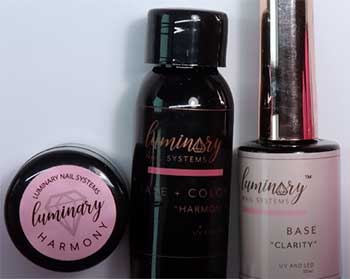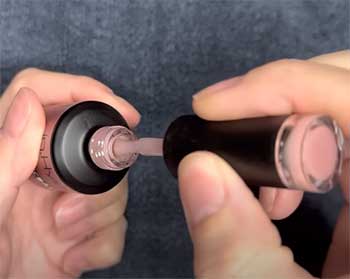If you’re a nail enthusiast, you’ve probably heard of builder gel and rubber base. These two nail products have taken the nail care industry by storm. However, it can be a little tricky to understand the differences between the two, and which one is best suited for your needs.
In this comprehensive guide, we will dive deep into the world of builder gel and rubber base, their pros and cons, and answer some frequently asked questions.
A Brief Comparison Table
| Feature | Builder Gel | Rubber Base |
| Primary Use | Strengthening nails, nail extensions, repairing | Flexible foundation for gel polish application |
| Flexibility | Less flexible | Highly flexible |
| Strength | Stronger structure | Strong, yet flexible |
| Application Difficulty | Requires more skill | Easier to apply |
| Compatibility with Gel Polish | Can be used with a rubber base coat | Compatible with various gel polish brands |
| Cure Time | Longer cure time | Faster cure time |
| Removal Process | May require more time to soak off | May require more time to soak off |
| Cost | Can be more expensive | Can be more expensive |
| Nail Extension Capability | Suitable for nail extensions | Not suitable for nail extensions |
| Prevention of Chipping/Peeling | Not specifically designed for this | Designed to prevent chipping and peeling |
| Repairing Damaged Nails | Effective for repairing damaged nails | Not specifically designed for this |
A Tale of Two Nail Products: Builder Gel and Rubber Base
Once upon a time, there was a nail care aficionado who sought the perfect solution for beautiful, long-lasting, and strong nails.
She ventured through the aisles of nail salons and beauty stores, only to find herself bewildered by the endless array of products. That’s when she stumbled upon two nail care gems – builder gel and rubber base.
Builder Gel: The Nail Strengthener and Extender

Builder gel is a thick, self-leveling gel that’s designed to add strength and structure to natural nails.
It’s perfect for people who want to grow their nails longer, repair damaged nails, or create a more even nail surface.
Builder gel can also be used for creating nail extensions, allowing you to rock long, elegant nails without the need for acrylics or other damaging methods.
Pros of Builder Gel
- Adds strength and structure to natural nails
- Can be used to create nail extensions
- Can be used to repair damaged nails
- Provides a smooth and even nail surface
Cons of Builder Gel
- May require more skill to apply correctly
- Can be more expensive than other nail care products
- Takes longer to cure under a UV or LED lamp
Also Read: Differences Between Jelly Soft Curls And Pillow Soft Curls.
Rubber Base: The Flexible Foundation
On the other hand, rubber base is a type of base coat that’s thicker and more flexible than traditional base coats. It’s designed to provide a strong, yet flexible foundation for gel polish application.

Rubber base can help prevent chipping and peeling, while also helping to protect the natural nail from staining and damage.
Pros of Rubber Base
- Provides a strong and flexible foundation for gel polish
- Helps prevent chipping and peeling
- Protects the natural nail from staining and damage
- Can be used with a variety of gel polish brands
Cons of Rubber Base
- Not suitable for nail extensions
- May require more time to soak off compared to traditional base coats
- Can be more expensive than traditional base coats
Analyzing the Pros and Cons: Builder Gel And Rubber Base
When deciding between builder gel and rubber base, it’s essential to consider your specific nail care needs.
Builder gel is an excellent choice for those who want to strengthen their nails, repair damage, or create nail extensions. However, if you’re looking for a strong and flexible foundation for your gel polish, rubber base may be the better option.
Frequently Asked Questions (FAQ)
Builder gel is a thick, self-leveling gel designed to add strength and structure to natural nails, while rubber base is a flexible base coat that provides a strong foundation for gel polish application. Builder gel is ideal for nail extensions and repairing damaged nails, whereas rubber base is best for preventing chipping and peeling of gel polish.
BIAB, or “Builder In A Bottle,” is a type of builder gel that comes in a bottle, making it easier to apply than traditional builder gels. Rubber base, on the other hand, is a flexible base coat designed for gel polish application. The main difference between the two is their intended use; BIAB is meant for building and strengthening nails, while rubber base is meant for providing a strong and flexible foundation for gel polish.
Yes, you can use a rubber base coat with builder gel. First, apply the rubber base coat and cure it under a UV or LED lamp. This will create a strong and flexible foundation for the builder gel. Then, apply the builder gel to add strength, structure, or length to your nails as desired. Finally, finish with a gel top coat for added shine and protection.
Rubber base gel is used to provide a strong, yet flexible foundation for gel polish application. Its unique formula helps prevent chipping and peeling, while also protecting the natural nail from staining and damage. Rubber base gel is compatible with various gel polish brands and can be used as an alternative to traditional base coats for a longer-lasting manicure.
Rubber base gel is a flexible base coat designed for use with gel polish, while hard gel is a type of nail enhancement product used to create nail extensions or overlays. Rubber base gel is known for its flexibility, which helps prevent chipping and peeling of gel polish. Hard gel, on the other hand, provides a more rigid and sturdy structure, making it suitable for adding length or strength to natural nails. The main difference between the two lies in their intended use and the level of flexibility they offer.
Also Read: Is Urban Doll Eyelash Extension Kit Worth It?
In Conclusion: Choosing the Right Nail Care Solution
Ultimately, the choice between builder gel and rubber base depends on your specific nail care needs and desired outcomes. If you’re looking to strengthen your natural nails, repair damage, or create nail extensions, builder gel is the way to go.
However, if you want a strong and flexible foundation for your gel polish that helps prevent chipping and peeling, rubber base is the ideal choice.
With this comprehensive guide, you’re now equipped with the knowledge to make an informed decision between builder gel and rubber base. So, go forth and explore the world of nail care with confidence, knowing that you’ve got the inside scoop on these popular products. Happy nail care adventures!



